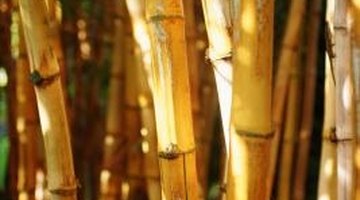Is Bamboo Termite Proof?
While long used in many Asian countries, bamboo has become more common in the United States. Thought of as a durable, eco-friendly material, bamboo is being used for flooring or fencing options. While not termite proof, bamboo that is treated correctly can be highly termite resistant. For this reason, some homeowners consider using bamboo to prevent termite damage.
What Is Bamboo?

Bamboo is a type of grass, not a tree. The rounded stem, also called culm, is hard on the outside and hollow on the inside. Bamboo grows very quickly and can be very intrusive. As it grows faster than trees and can be harvested sooner, typically in three to seven years, many consider it an eco-friendly renewable material.
About Termites
Termites live in colonies that can range from several hundred to over a million. They feed on cellulose, which is plentiful in wood and its by-products such as paper and cardboard. Termites are often grouped by their feeding behavior, such as drywood or subterreanean, both of which can cause substantial damage to homes and other structures.
Bamboo and Termites
While it is often believed that bamboo is termite proof, the inner portions of raw bamboo culms contain cellulose fibers (starches and sugars) that attract insects, including termites. Once these fibers are removed, the bamboo is no longer appealing to termites. Thus, bamboo is not termite proof. However, there are ways to make the bamboo very termite resistant.
How to Treat Bamboo
Bamboo may be treated naturally or chemically to remove the inner cellulose fibers. Natural methods include boiling. Once the bamboo is harvested and cut into strips, it is dried and boiled to eliminate any sugars or starches. Once these are removed, it is no longer attractive to termites. Bamboo may also be treated chemically to deter termites. The method can vary by the company harvesting and manufacturing the bamboo.
Bamboo Uses
Due to its durability and eco-friendly reputation, bamboo has become a readily available material for flooring, fencing, cabinetry and furniture. Its resistance to termites might make it especially appealing to people who live in termite-prone areas.
References
Writer Bio
Lisa Hall began writing professionally in 1998. In addition to freelance writing, she worked as a graphic designer for international nonprofit organizations for six years until she started a home staging business in 2009. She frequently writes about art, design and home improvement. She holds a Master of Science in European social policy from The London School of Economics.
Photo Credits
- Thinkstock/Comstock/Getty Images
More Articles



